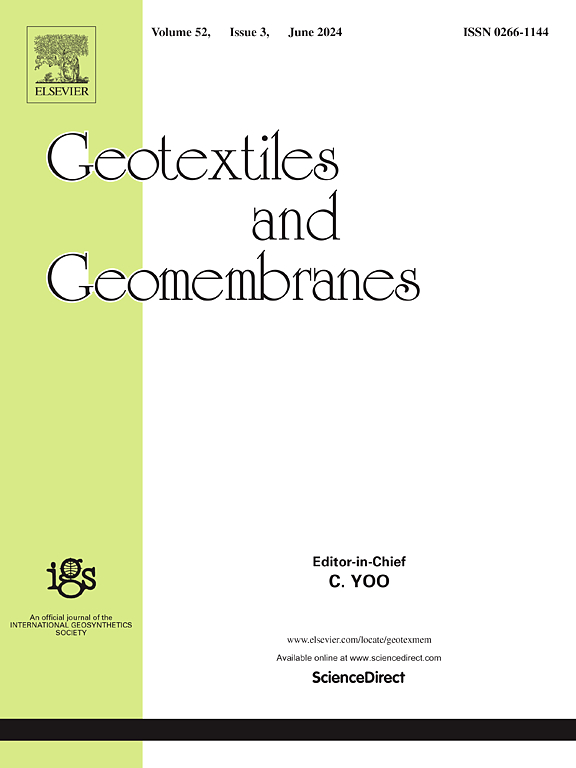注浆真空预压结合电渗透加固修复镍污染污泥的试验研究
IF 6.2
1区 工程技术
Q1 ENGINEERING, GEOLOGICAL
引用次数: 0
摘要
传统的真空预压、电渗透技术在处理高含水率的污染污泥时,面临去除率差、补强、能耗高等挑战。本研究采用灌浆、真空预压和电渗(GVE)相结合的方法对高含水率镍污染污泥进行加固和修复。通过室内模型试验,评价了注浆剂、真空预压和电压加载方式对Ni去除效率、土体加固和能耗的影响。结果表明,海藻酸钠灌浆能螯合土壤中的Ni2+,有利于电渗过程中重金属离子的去除。GVE联合真空预压显著提高了Ni的去除率,达到94.52%,而单独电渗透的去除率为65.11%。此外,GVE使土壤含水量降低到30.34%,抗剪强度提高到98 kPa,表明土壤加固效果有所改善。与恒压加载相比,阶梯加载进一步降低了35%以上的能耗,同时加强了土壤的修复和加固。本研究认为,GVE特别是分级加载和间歇加载是一种有效且节能的重金属污染污泥修复和加固方法。本文章由计算机程序翻译,如有差异,请以英文原文为准。
Experimental study on reinforcement and remediation of nickel-contaminated sludge using grouting vacuum preloading combined with electroosmosis
Traditional vacuum preloading, electroosmotic techniques face challenges such as poor removal efficiency, reinforcement and high energy consumption when treating contaminated sludge with high water content. This study investigates the reinforcement and remediation of nickel (Ni)-contaminated sludge with high water content using an approach combining grouting, vacuum preloading, and electroosmosis (GVE). Through laboratory model tests, the effects of grouting agents, vacuum preloading, and voltage loading modes on Ni removal efficiency, soil reinforcement, and energy consumption were evaluated. The results demonstrate that the grouting of sodium alginate can chelate Ni2+ in the soil, facilitating the removal of heavy metal ions during the electroosmosis process. The GVE combined with vacuum preloading significantly enhances Ni removal rates, achieving up to 94.52 % compared to 65.11 % with electroosmosis alone. Additionally, GVE reduced soil water content to 30.34 % and increased shear strength to 98 kPa, indicating improved soil reinforcement. The step loading further reduced energy consumption by over 35 % compared to constant voltage loading while enhancing both soil remediation and reinforcement. This study concludes that GVE, particularly with step loading and intermittent loading, is an effective and energy-efficient method for remediating and reinforcing heavy metal contaminated sludge.
求助全文
通过发布文献求助,成功后即可免费获取论文全文。
去求助
来源期刊

Geotextiles and Geomembranes
地学-地球科学综合
CiteScore
9.50
自引率
21.20%
发文量
111
审稿时长
59 days
期刊介绍:
The range of products and their applications has expanded rapidly over the last decade with geotextiles and geomembranes being specified world wide. This rapid growth is paralleled by a virtual explosion of technology. Current reference books and even manufacturers' sponsored publications tend to date very quickly and the need for a vehicle to bring together and discuss the growing body of technology now available has become evident.
Geotextiles and Geomembranes fills this need and provides a forum for the dissemination of information amongst research workers, designers, users and manufacturers. By providing a growing fund of information the journal increases general awareness, prompts further research and assists in the establishment of international codes and regulations.
 求助内容:
求助内容: 应助结果提醒方式:
应助结果提醒方式:


